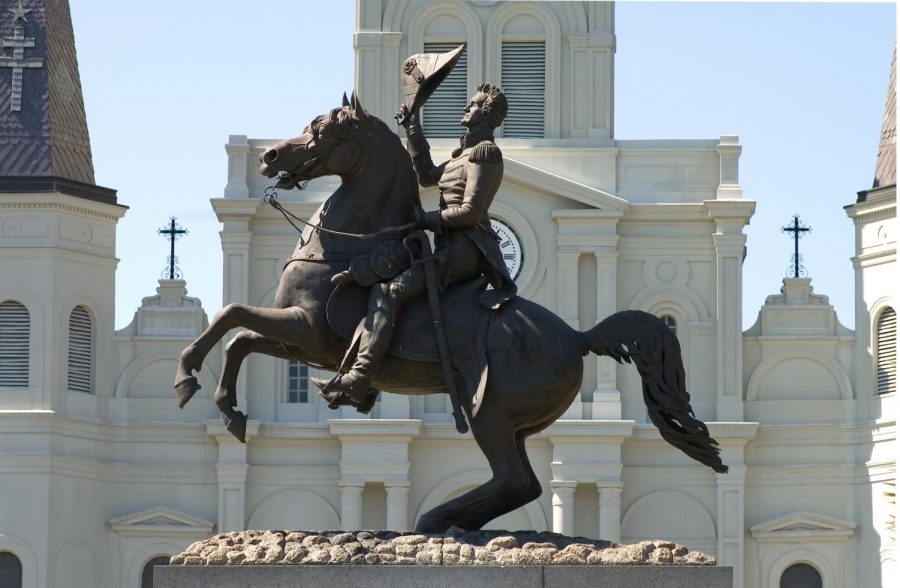Group eliminates art depictions of slave owners
March 2, 2018
Movement group Take ‘Em Down NOLA (New Orleans, LA) continues to eliminate iconic statues and monuments of accomplished figures who owned slaves, according to The Advocate. Like any other movement, they are a group of people trying to obtain a political goal.
Last summer, the group and local governments focused on taking down 13 statues in New Orleans. This act stemmed from the white supremacist event in Charlottesville, Virginia on Aug. 12, 2017, according to The Advocate.
The Thomas Jefferson and Washington monuments were protested among members of NOLA. Specifically after the Charleston church shooting, Robert E. Lee, P.G.T. Beauregard, Jefferson Davis and the monument commemorating the Battle of Liberty Place were removed due to
“We the people of New Orleans demand that the Mayor and City Council take immediate action to remove all monuments, school names and street signs dedicated to White Supremacists. These structures litter our city with visual reminders of the horrid legacy of slavery that terrorized so many of this city’s ancestors,” said Clint Smith of the New Republic.
Although one’s goal is to stand up for repressed cultures, some argue against taking these symbols down as they represent how far society has come since the monuments went up.
Pastor Willie D. Lee of the St. Augustine church said simply removing a monument doesn’t change a person’s views.
“You can’t change what happened … removing monuments and removing other things is not going to change what happened in the past,” he said. “If we can’t change our heart, moving a monument is nothing because the monument is still in your heart … we’ve got to change from within,” Lee said.
The removal of monuments may not eliminate past ideals and perspectives, but it may change present thoughts. Artists from all over have commented on the removal of such iconic symbols, suggesting alternative solutions.
Los Angeles-based artist Mark Bradford told the New York Times that the Confederate statues should not be removed, but if they are, a plaque should be placed in the same spot explaining why they were taken down.
Director of the Smithsonian’s National Museum of African American History Lonnie G. Bunch III believes “dismantled statues [should] be grouped together and contextualized, so people understand what they stood for,” according to The New York Times.
After several years of monuments being taken down, curators Paul Farber and Ken Lum taught a course at the University of Pennsylvania discussing this current issue. Farber believes monuments bring out dynamics of the present and sum up the past, present and future into a single piece of art, according to The Huffington Post.
Farber does believe Confederate monuments should be removed to honor aspects of social justice. To replace removed monuments, Farber and Lum developed a project known as the Monument Lab in order to create monuments geared towards representing the future.
“We want to emphasize all the histories that aren’t solidified in marble and bronze,” Farber said. “Our project is designed to unearth all the monuments that could be.”
Obliterating rough patches does not automatically let people forget about their existence. Once people are introduced to different ideas though, noticeable progression regulates new thoughts regarding old history.





